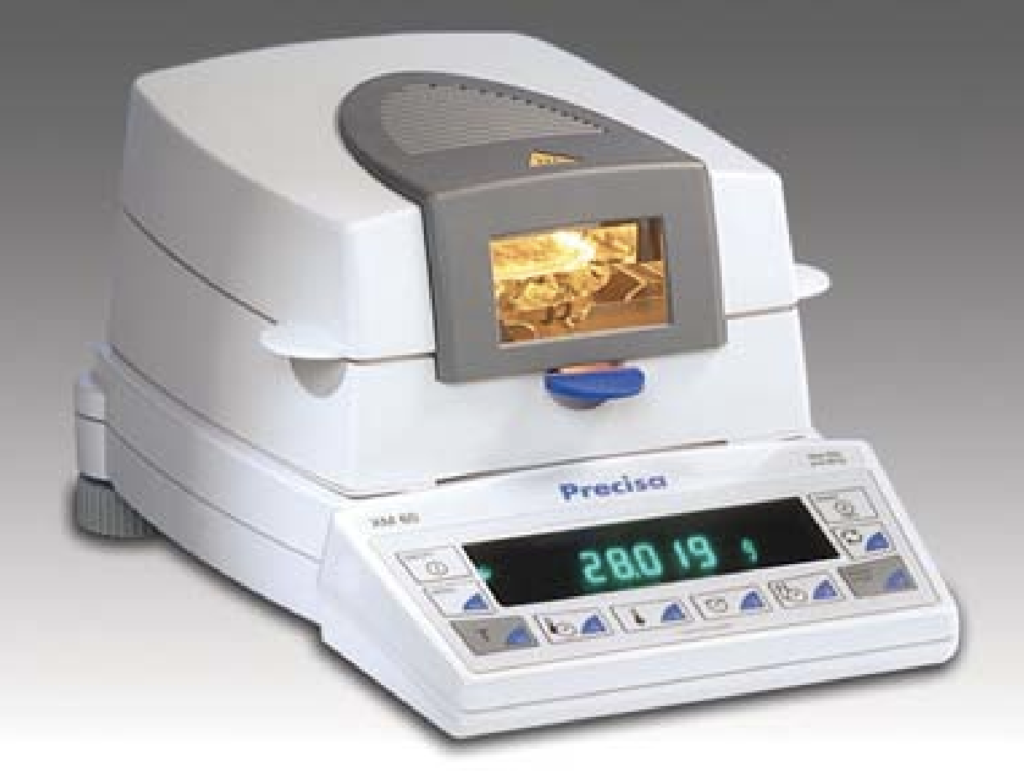GUIDE
The best way to measure moisture by DSC moisture balances.

Moisture is a physical variable formally defined as the amount of water dissolved in a gas or absorbed in a solid, water molecules change the length of organic materials, the conductivity and weight of hygroscopic and chemical absorbent materials, and in general the impedance of almost all materials. Moisture is a key factor that can have a great influence on the quality and properties of a material, as moisture content has a direct bearing on the processability, shelf life, use, and quality of a product. In some types of products, the maximum allowable moisture content may even be regulated by legal regulations, such as country-specific food standards.
A moisture balance is a piece of equipment that is used to measure moisture in different materials quickly and accurately. This equipment has the ability to determine the remaining dry substance after a process of drying with infrared or halogen energy of the total substance that has been weighed previously and thus calculate the humidity of the wet heavy mass, observing during the drying process the drop in moisture content on the device screen. The moisture balance weighing system has all the properties of modern balances.
At DSC balances you will find the best Radwag moisture balances that combine high quality and durable construction into sleek, compact designs. DSC moisture balances operate based on the LOD concept. DSC carries various brands Including DSC, CEM, Sartorius, Ohaus, Mettler Toledo, A&D, and Adam Equipment. These testers provide dependable and accurate results for a wide variety of applications such as plastics, pharmaceutical and chemical, food, textile, wastewater, and other applications.
Importance of Moisture Analyzers.
Industries.
These scales are commonly used in industries to quickly analyze pastes, masses, wood, adhesives, and powders in the production process and incoming goods control. Moisture balances are equipped with state-of-the-art technology to accurately determine moisture, dry matter, or consistency of volatile and fixed materials and substances. A moisture balance is a device that uses the loss-on-drying method, also called the thermo gravimetric principle, to determine the moisture content of a sample. A moisture balance is perfect for measuring humidity in food, pharmaceutical, chemical, and other industries.
Laboratories.
The importance of the humidity analyzer in the laboratory is developed from the calibration of the instruments, and measuring the values to be delivered in percentages, for which some samples of material with different percentages of humidity are needed, and that cover the typical measurement range of the desired application.
In this sense, the samples are analyzed using the microwave resonance method and with an appropriate laboratory reference method. Usually, the moisture of a sample is determined by the weight loss after being dried, and sometimes the percentage of water in a sample is determined by chemical processes.
Accordingly, the moisture balance has its importance in laboratories, which are:
- It is extremely accurate.
- Offers independent measurement of density and volume.
- The measurement is independent of optical factors, such as the color, structure, and surface shape of the product.
- Determination of moisture on the surface and core of the product.
- Non-destructive measurement.
- It does not require consumables, such as reagents, etc.
- The instruments are simple to handle.
In this sense, this method is the most accurate, requires a long cycle time, and will depend on the type of sample to be taken, taking into account the size of the mince, time, level of working pressure, duration of storage, and others that influence the quality of work.
